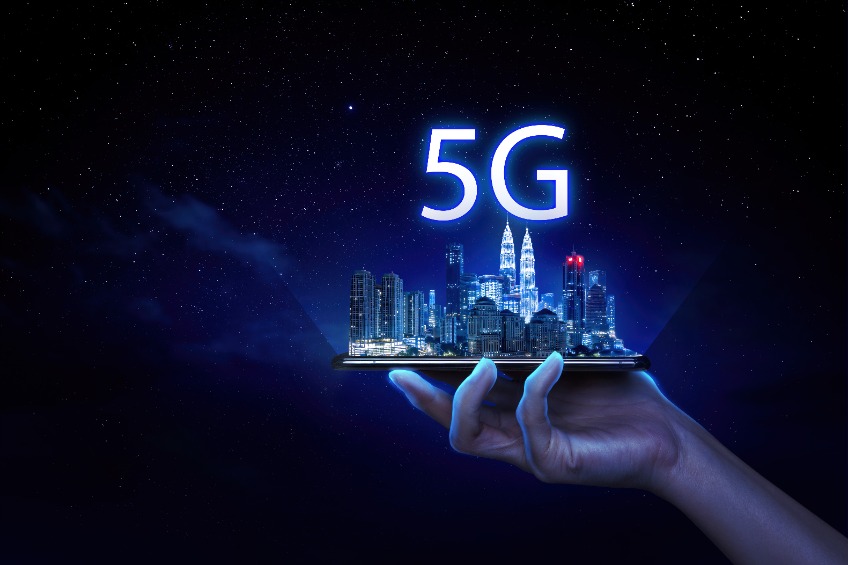5G labs are becoming very popular. CSPs are welcoming partners to work with them to come up with new ideas and use cases that will ultimately drive increased use of 5G networks and effectively increase their revenues.
In Europe, Orange has a 5G lab where, according to their website, they are “shaping the world of tomorrow” and “are here to support our collaborators and to help them develop new pragmatic use cases with 5G networks.”
In the U.S., Verizon also has a 5G lab where they “work with start-ups, academia and enterprise teams to build a 5G-powered world.” In India after 5G was launched in October 2022, the Indian government announced that they “plan to set up 100 5G labs across the country.”
In November 2022, Vodafone announced the opening of their Edge Innovation Lab, which will showcase multi-access edge compute capabilities, which when combined with 5G opens up a wide range of ultra-low latency use cases, such as autonomous vehicles, autonomous operations in factories, immersive augmented and virtual reality, remote medicine, cloud gaming and drone transport.
In terms of 5G lab activity, this is just scratching the surface. Many more CSPs, as well as vendors, are building labs to come up with new ideas and use cases. There is a lot of investment in 5G innovation and new use cases at the moment.
Turning lab innovation into revenue
In 2023 as 5G standalone (SA) roll outs begin to accelerate we will see pressure from stakeholders to turn the investment in 5G labs and all the new use cases and clever ideas into revenues. And this could cause some issues in CSP’s IT departments. The reason: an over-reliance on legacy systems.
Many of the BSS (business support systems) and monetization solutions that are currently in use at many CSPs were initially built and designed at a time when text messaging was considered a major innovation. Over-time they’ve been modified, and new software patches added to allow for advances like adding Netflix to a mobile bundle.
Visit the website of any 5G lab and you’ll see that the use cases they’re working on are far removed from traditional telecoms services. Taking these use cases and commercially launching them to the market using existing BSS and monetization stacks will be hard, and system changes will be expensive, use up too much valuable time and generally cause heartache and headaches all round.
When it comes to 5G SA and turning the new uses that come from the lab into revenues, maybe it’s time for a new approach. CSPs can take a monetization and BSS stack, that was built to deliver the agility needed for 5G and implement it as a greenfield system with no integration to legacy.
This way CSPs can get the latest, cloud-native solution that is pre-integrated to the 5G SA core, be up and running quickly (think days vs months) and be ready to build, manage and monetize the innovative use cases that the 5G labs come up with.
Using 5G to get rid of legacy headaches
As well as having a separate BSS and monetization stack to support their 5G business, CSPs can also use this stack to remove the headache of legacy systems by migrating customers off legacy stacks in a low-risk and organic manner. An organic customer migration involves moving customers from legacy to the new BSS in a ‘business as normal’ process.
As a day-to-day part of their business, CSPs are constantly upselling customers new offers. With the introduction of 5G there are many customers moving from one offer to a new one. So, when a customer moves to a new offer then add them to the new 5G BSS and monetization stack and remove them from the legacy system.
Same with any new customers. Don’t add them to the legacy system that is waiting to be decommissioned; add them to the new stack, which has the agility to manage all different service combinations covering all services offered by the CSP, including 5G, 4G, content, fixed broadband and FMC.
One of the main benefits of organic migration is that the CSP does not need to go through all the hard parts of technical transformation. They don’t have to carry over some unwanted features to support legacy offers that may only be used by a handful of customers.
They don’t have to map legacy products and processes to new systems, or undergo extensive customer education of new processes, carry out months of planning and testing and undergo the trails that seem to be part of many legacy transformation projects.
By carrying out an organic data migration by adding new and upgrading customers to the new 5G BSS and monetization stack, CSPs can quickly and cost-effectively take advantage of the new 5G opportunities. This stack provides the bridge from the 5G lab to commercial reality and allows CSPs to experiment with new 5G use cases, offers, business models and ideas and develop and try out new concepts.

